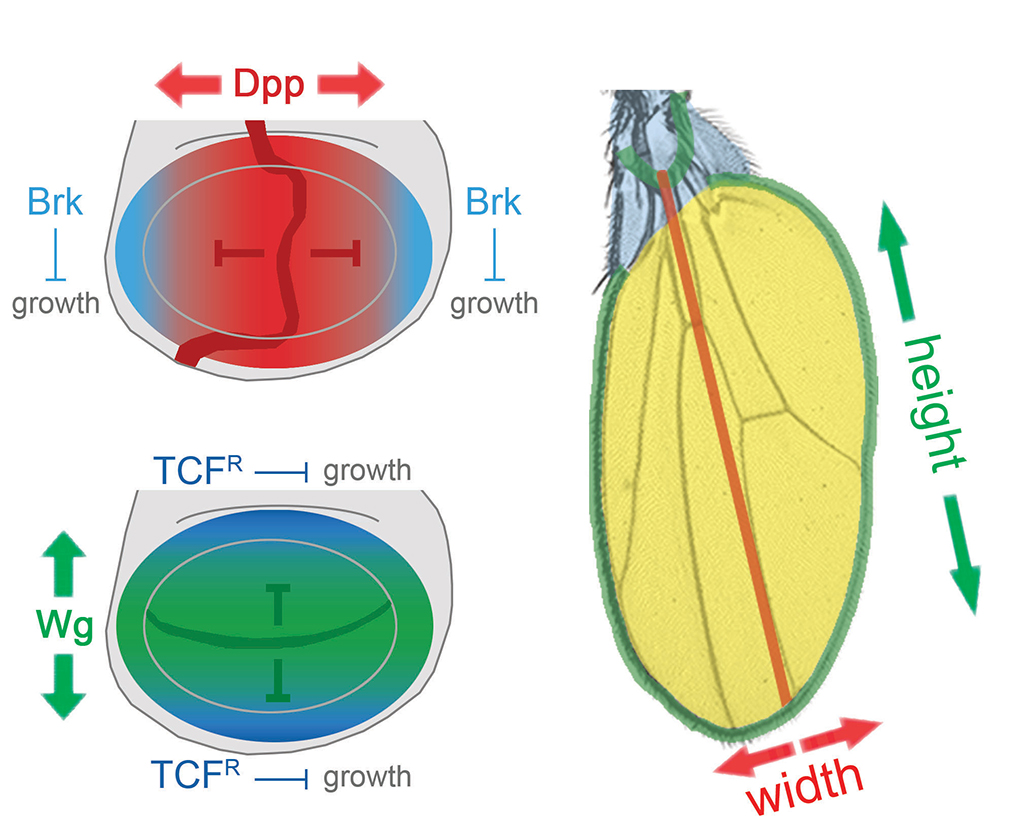Marco Milán – Institut de Recerca Biomèdica (IRB Barcelona)
Morphogens are distributed throughout tissues in a concentration gradient, informing cells about the “location” within a tissue and providing instructions on how these cells should develop. Several studies have reported that these morphogens are also responsible for the growth of these tissues. While the presence of morphogens along a gradient defines the spatial distribution of the different structures, the study headed by the Milán lab has used the developing wing primordium of Drosophila to demonstrate that the gradient itself is not indispensable to promote growth. The two morphogens addressed in this study, namely Dpp and Wg (the orthologues of BMP and Wnt in vertebrates), promote the growth of the fly wing, but through two independent and non-interchangeable pathways. Dpp stimulates growth along the anteroposterior axis in a unique and exclusive manner, while Wg favours proliferative activity along the proximodistal axis. The work carried out by Lara Barrio and Marco Milán demonstrates that the capacity of these morphogens to promote growth in two distinct directions is due to their restricted expression in two perpendicular bands and to the need for both to be present for the tissue to grow. These findings thus reveal the mechanism through which organ proportions are regulated by morphogen activity. Given the high genetic and mechanistic conservation between flies and humans, these discoveries pave the way for new research lines into congenital malformations and other diseases.
